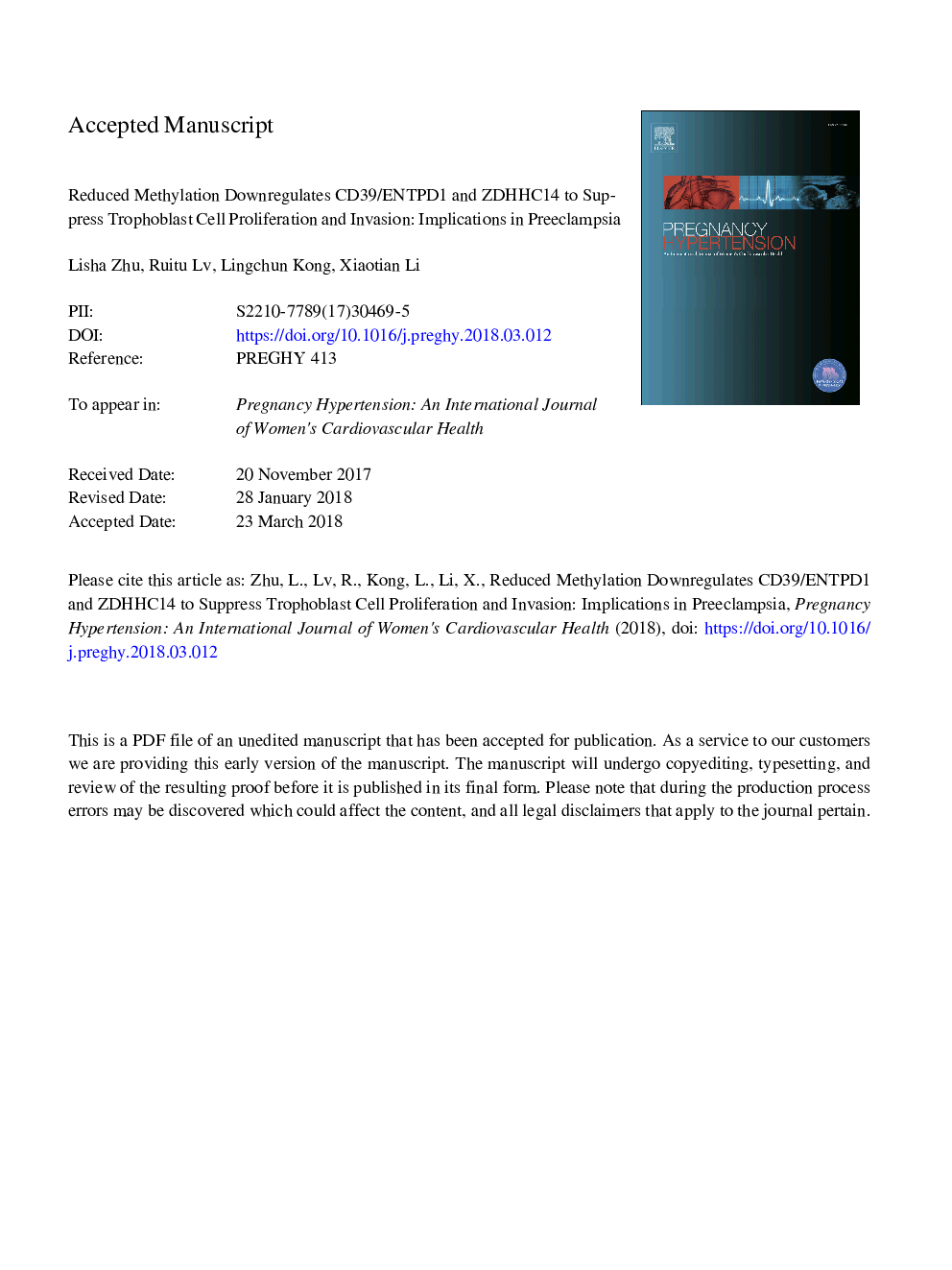| Article ID | Journal | Published Year | Pages | File Type |
|---|---|---|---|---|
| 8674899 | Pregnancy Hypertension: An International Journal of Women's Cardiovascular Health | 2018 | 28 Pages |
Abstract
Preeclampsia (PE) is a pregnancy-specific syndrome affecting up to 8% of pregnancies worldwide. While PE is a leading cause of maternal and neonatal mortality and morbidity, the pathophysiology of PE is unclear to date. Here, we have verified that dysregulation of CD39/ectonucleoside triphosphate diphosphohydrolase-1 (ENTPD1) and zinc finger DHHC-type containing 14 (ZDHHC14) via DNA methylation plays a vital role in late-onset PE pathology. Our study confirmed the differentially methylated regions (DMRs) of the CD39 and ZDHHC14 gene bodies that we found previously in clinical samples of preeclamptic placentas by MassARRAY EpiTYPER. Then, we showed that CD39 and ZDHHC14 were restricted to the syncytiotrophoblast of the full-term human placenta and that their gene expression levels were significantly decreased in the late-onset preeclamptic placenta. Because DNA methylation can affect gene expression, treatment of trophoblast cell lines (BeWo and JEG-3) with 5-Aza-2â²-deoxycytidine (5-Aza-dC) was performed to deplete global DNA methylation in vitro. Then, we found that gene expression of CD39 and ZDHHC14 was decreased and that secretion of CD39 was also markedly downregulated in the hypomethylated trophoblast cell lines. Moreover, siRNA-mediated knockdown of CD39 or ZDHHC14 significantly inhibited trophoblast cell proliferation and invasion. Collectively, our study shows that downregulation of CD39 and ZDHHC14 via hypomethylation is relevant to late-onset PE through the effects of these genes on trophoblast cell lines. Hence, CD39 and ZDHHC14 may act as potential markers and targets for the clinical diagnosis and treatment of PE.
Related Topics
Health Sciences
Medicine and Dentistry
Cardiology and Cardiovascular Medicine
Authors
Lisha Zhu, Ruitu Lv, Lingchun Kong, Xiaotian Li,
